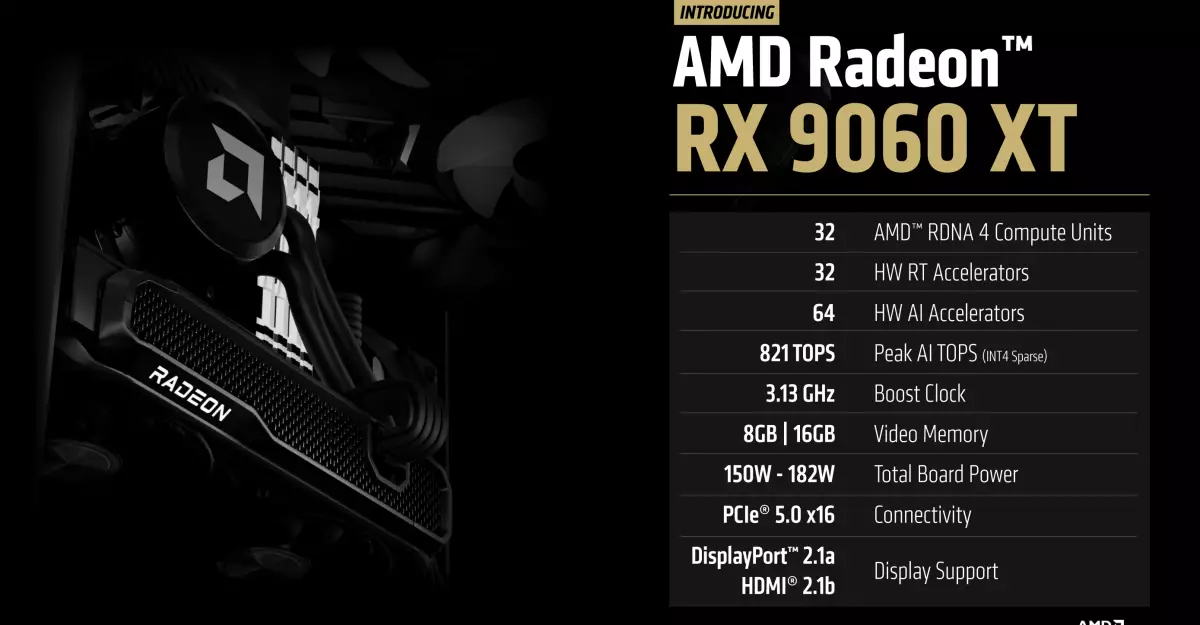At Computex this year, AMD took the stage to announce its latest entrant into the graphics card market, the Radeon RX 9060 XT. Positioned to take on Nvidia’s RTX 5060, this new graphics card is creating a stir, particularly due to its VRAM configurations of 8GB and 16GB. In an era where high-end gaming demands exceptional memory, many are questioning the wisdom of limiting high-end GPUs to an 8GB memory allocation, a step that AMD has mirrored from Nvidia. These two powerhouses of the tech world seem to be stepping into similar territory, raising the stakes for what gamers can expect from their hardware.
The 8GB VRAM Dilemma
The ongoing debate surrounding the adequacy of 8GB of VRAM has seen a resurgence, particularly in relation to the visually stunning and graphically intensive games dominating the market. In 2025, expecting hardware to keep pace with game development should be non-negotiable. The choice made by both AMD and Nvidia to limit high-performance GPUs to 8GB is alarming, as the gaming landscape rapidly evolves. Such decisions may not only alienate hardcore gamers but could also tarnish the reputation of these companies among enthusiasts. AMD’s ambition to carve out market space with the RX 9060 XT may be misguided if it leans too heavily into these restrictive VRAM specifications.
Technical Specifications: Promising but Incomplete
The Radeon RX 9060 XT packages a robust set of capabilities, boasting 32 RDNA 4 compute units and a commendable boost clock of 3.13 GHz. The card is designed with modern connectivity in mind, incorporating support for the latest DisplayPort 2.1a and HDMI 2.1b standards. Moreover, the board power varies between 150 watts and 182 watts depending on the specific model. Yet, despite these impressive specs, AMD has strangely withheld pricing details and a release date. This decision raises eyebrows; a lack of information may indicate uncertainty or a calculated strategy to build anticipation. However, in today’s fast-paced tech environment, certainty often trumps suspense.
Comparative Market Dynamics and Unforeseen Challenges
The simultaneous announcements from AMD and Nvidia create a unique lens through which to assess consumer reactions. Interestingly, Nvidia faced backlash for the lack of available reviews for its RTX 5060 before launch, leading to speculation that the company was anxious about feedback relating to its own controversial 8GB VRAM limit. The ensuing rift between GPU makers and reviewer channels, such as Gamers Nexus, highlights a potential downward spiral in trust and integrity within the gaming hardware community. Such dynamics suggest that manufacturers might be more focused on competitive positioning than fostering transparency and reliability.
Implications for the Gaming Community
For gamers, the implications of these choices reverberate well beyond the immediate specs; they echo into the long-term viability of gaming performance. An environment dominated by restrictive VRAM could hinder richer experiences and advancements in game design. The AMD RX 9060 XT, alongside Nvidia’s offerings, illustrates a complex, evolving market where consumers are left weighing performance against a backdrop of corporate strategy and market dynamics. As AMD enters the fray with its RX 9060 XT, it boldly stakes its claim—but at what cost to the gamer?

